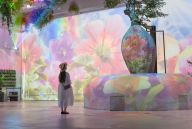The Sweet Life Along Kyushu’s Sugar Road
Eat Your Way in Sweets Across the Nagasaki Kaido
From wagashi to soft-serve ice cream, there’s no denying that Japanese people love their sweet treats. But for many centuries, sugar wasn’t cultivated in Japan or even used in confectionery — it was first used as a medicine and wasn’t widely available to regular people for a long time. So, how did Japan become hooked on the sugary stuff?
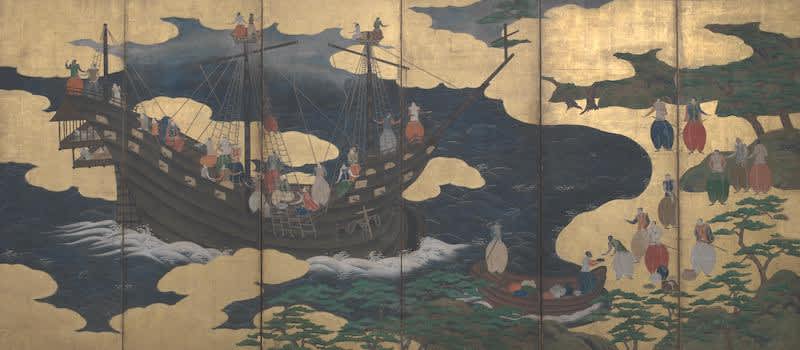
Collection of Nagasaki Musuem of History and Culture
It was the Portuguese who brought European cakes and sweets to Japan in the 16th century. They traded sugar at the Nagasaki Kaido, now affectionately known as the ‘Sugar Road’.
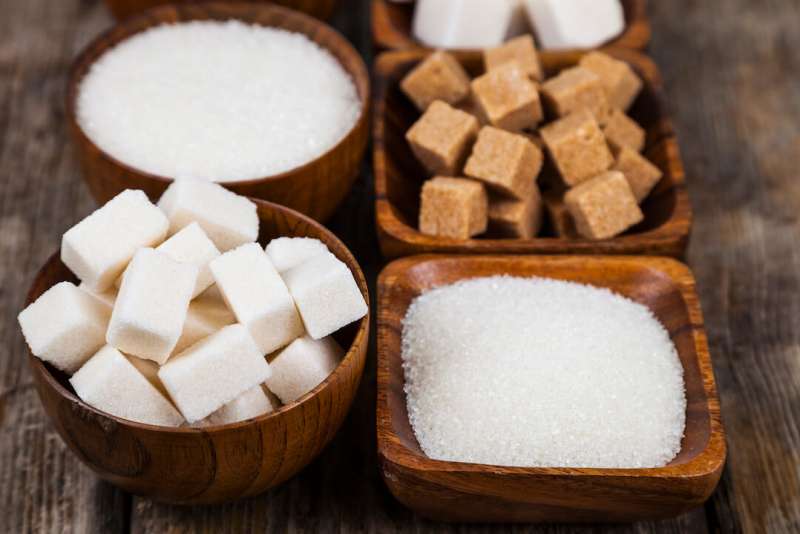
In light of Kyushu’s fascinating sugary history, here are four sweet Japanese treats to try when you’re next in the area!
Nagasaki’s Castella Cake

©Castella Honke Fukusaya
Out of the many sweets that emerged from Sugar Road, castella may be the most recognisable. Derived from bolo de Castela or ‘cake from Castile,’ this Japanese take on Portuguese sponge cake is beloved by locals and visitors alike. Moist, fluffy and lightly sweet, there’s nothing to dislike about this tender sponge cake.
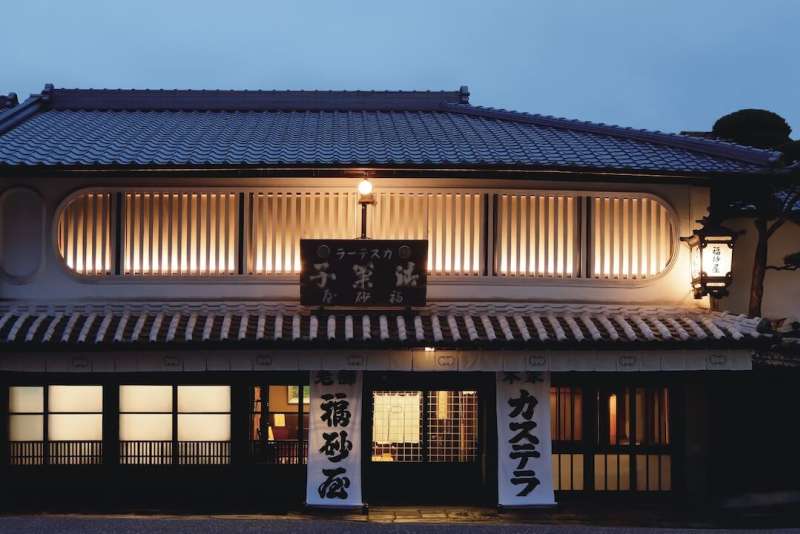
©Fukusunaya Main Store
Nagasaki’s signature sweet dates back to 1624 when the founder of confectioner Fukusaya opened the city’s first castella shop. It’s said that the founder learned the recipe from a Portuguese person and adapted it for local tastes, using mizuame sugar syrup for an extra-moist texture. What’s even more interesting is that they had no ovens, so they had to improvise with a coal-fired kiln called a hiki-gama, prodding the batter with bamboo picks to ensure even baking.
They must have done something right because they’re still selling castella several hundred years later — and they even continue to mix the batter by hand, without machines.
Location information
| Name: Fukusaya Address: 3-1 Funadaikumachi, Nagasaki City, Nagasaki 850-0904 Public transportation: 12-minute tram ride and 2-minute walk from Nagasaki Station Website: https://www.fukusaya.co.jp/global/en/index.html |
The Crispy Okoshi of Isahaya City

Those who enjoy sweet, crunchy snacks tend to find okoshi utterly delightful. A signature sweet from Isahaya City — a major rice-growing city — they’re essentially a rice crispy snack consisting of dehydrated puffed white rice mixed with brown sugar and mizuame sugar syrup and shaped into rectangular fingers. While they’re first said to have originated from the Heian period (794–1185), there’s no doubt the generous addition of imported sugar catapulted this humble treat to newly addictive heights!
For a taste of that old-world flavour, head over to Kashuen Moricho in Isahaya City. Founded in 1793, they’re the oldest okoshi-maker in the city. One of their best-sellers, the classic and well-loved “kuro-okoshi” (“black” okoshi), uses raw brown sugar, which gives it a complex, caramel-like flavour with a savoury edge, elevating this simple treat into a sophisticated snack. But they also cater to modern tastes, such as with their “Puchi OKOC” series which comes in fun flavours like plum, caramel and strawberry.
If that wasn’t enough reason to try them, okoshi are considered lucky sweets, as the name derives from the word ‘okosu’ or ‘to improve your fortune.’ Why not have one just in case?
Location information
| Name: Kashuen Moricho Address: 38–30 Saiwaimachi, Isahaya City, Nagasaki 854-0022 Public transportation: 1-minute walk from Saiwai Station Website: https://kashuen-moricho.co.jp/en/ |
Cheerful, Colourful Konpeitō Candy

Few people can fail to feel a little more cheerful when looking at konpeitō. Directly translated as ‘gold flat sugar,’ these brilliantly coloured candies have their origins in the Portuguese sweet confeito, which was introduced to Nagasaki by merchants and missionaries during the 16th century. Luis Frois, a Jesuit father, gifted the feudal lord Oda Nobunaga with a glass jar of confeito when travelling to Kitakyushu, which sparked a centuries-long obsession with these tiny sweets.
This simple sugar candy is a little reminiscent of the iced gem biscuits that Malaysians, Singaporeans and British people will be familiar with. Of course, they’re made in totally different ways. Each konpeitō is hand-made over a period of 10 or more days by layering and spraying syrup over individual granules of coarse sugar, as though coating a pearl with nacre. This gives them their distinctive spiky star shape, and also means they dissolve very slowly in your mouth!
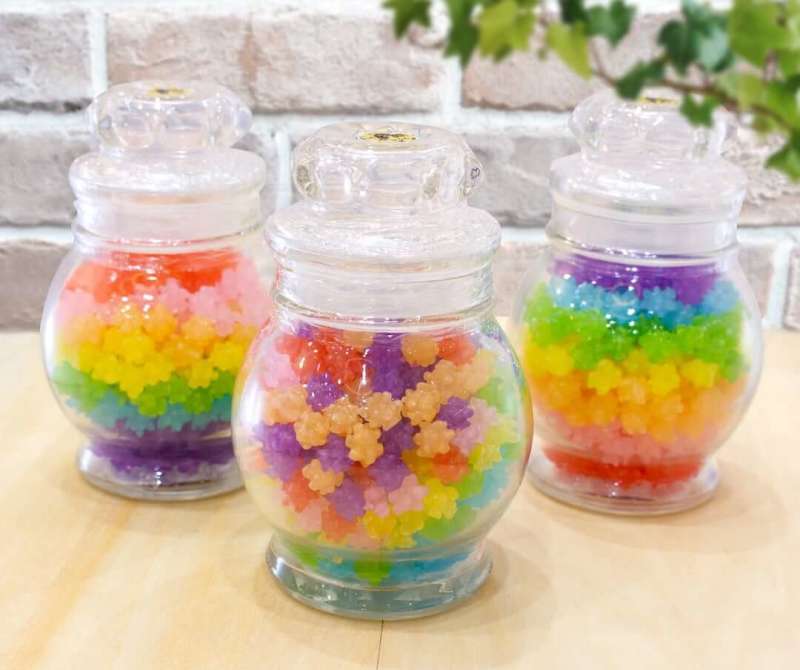
Today, they’re considered rather traditional, but there are confectioners working hard to revive them for modern audiences, an example being rainbow konpeitō in flavours like grape, soda, banana and grapefruit. (You can find similar ones at Renjyukadou Kompeito Cafe in Kitakyushu!) Others even offer konpeitō in flavours like cocoa, peach and banana. How unusual is that?
Location Information
| Name: Renjyukadou Kompeito Cafe Address: 2F 1-16-2 Nakashima, Kokurakita Ward, Kitakyushu City, Fukuoka 802-0076 Public transportation: 7-minute walk from “Kokura Kita Kuyakusho-mae” Bus Stop Website: https://shop.renjyukadou.com/about |
The Maruboro Saga

These soft, dark brown treats are marubolō! ‘Bolo’ is the Portuguese word for ‘cake’ and ‘maru’ means round. Typically made with flour, dark brown sugar, eggs and honey, they have a rich taste and almost bread-like texture. Some versions even contain roasted black sesame for extra aroma and texture. They’re wonderful when eaten with tea, or even dipped in tea, which is rather European!
Marubolō are considered one of Saga Prefecture’s signature sweets, but you can also find confectioners selling them nationwide. Within Saga City, perhaps one of the most famous is Tsuruya, whose handmade marubolō are consistently moist, tender and melt-in-the-mouth delicious — perfect with a cup of coffee. For an extra special souvenir, you can even buy made-to-order marubolō with your name or message branded on each piece! (Just remember to order at least two weeks in advance.)
Location Information
| Name: Tsuruya Address: 1-11-1 Ekimae Chuo, Saga Station, Saga Prefecture 840-0801 Public transportation: Located within Saga Station Website: https://marubouro.co.jp/about/ (Japanese only) https://www.saga-tripgenius.com/tourism_search/archives/44 (English) |
Isn’t the history of Japan’s iconic desserts just so fascinating? We hope this article inspires you to try some of these if you’ve never tasted them — and if you have, we hope they taste even better after knowing about how they came to exist. Look out for them on your next visit to Kyushu!
Discover more activities in Japan!
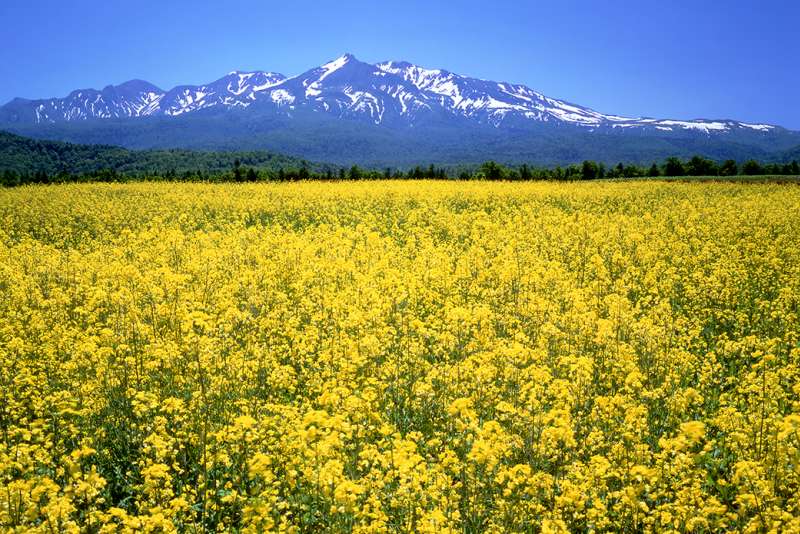
How to Spend a Sublime Summer in Hokkaido

Three Slow Travel 'Secrets' in Shizuoka















































